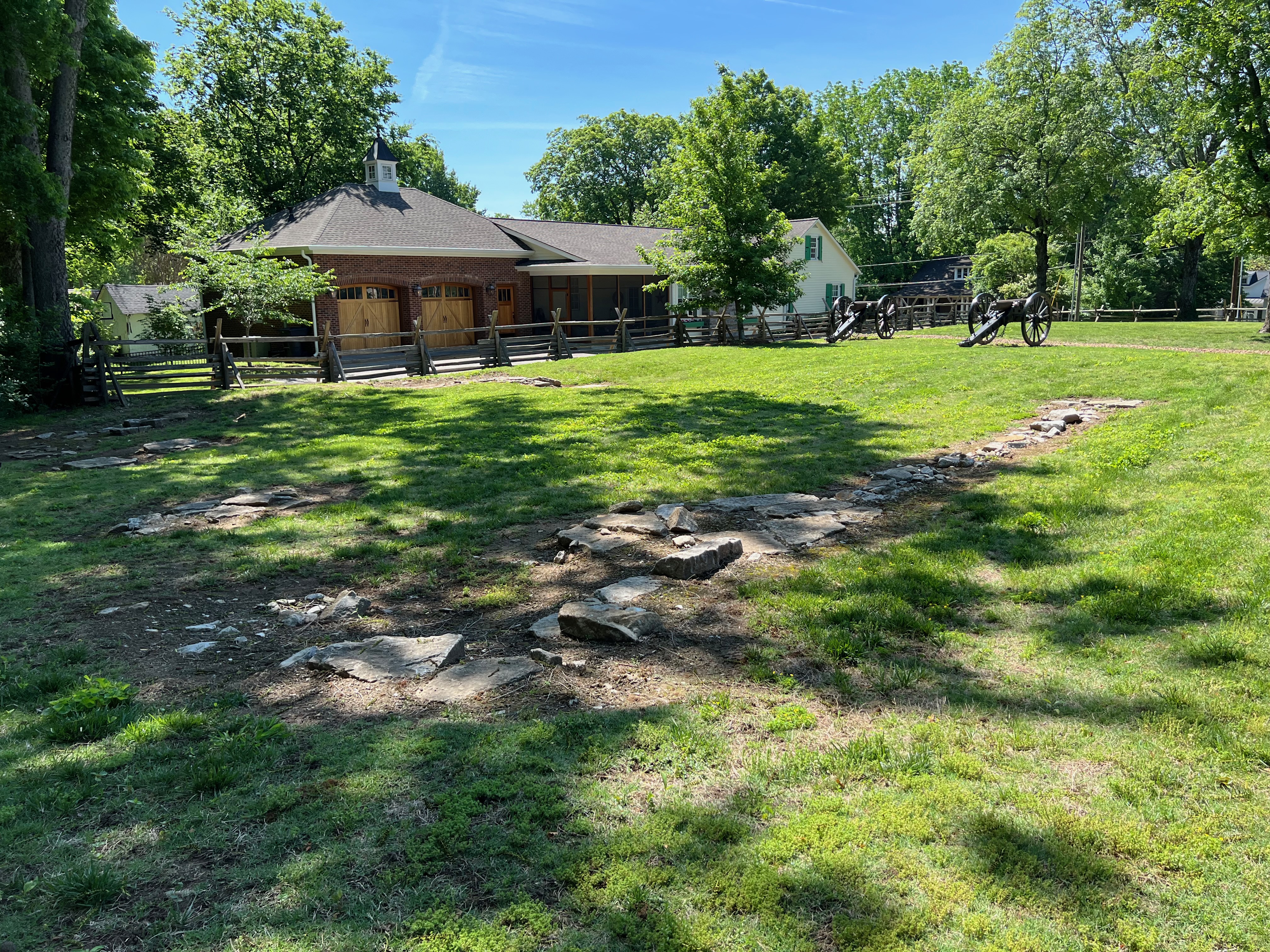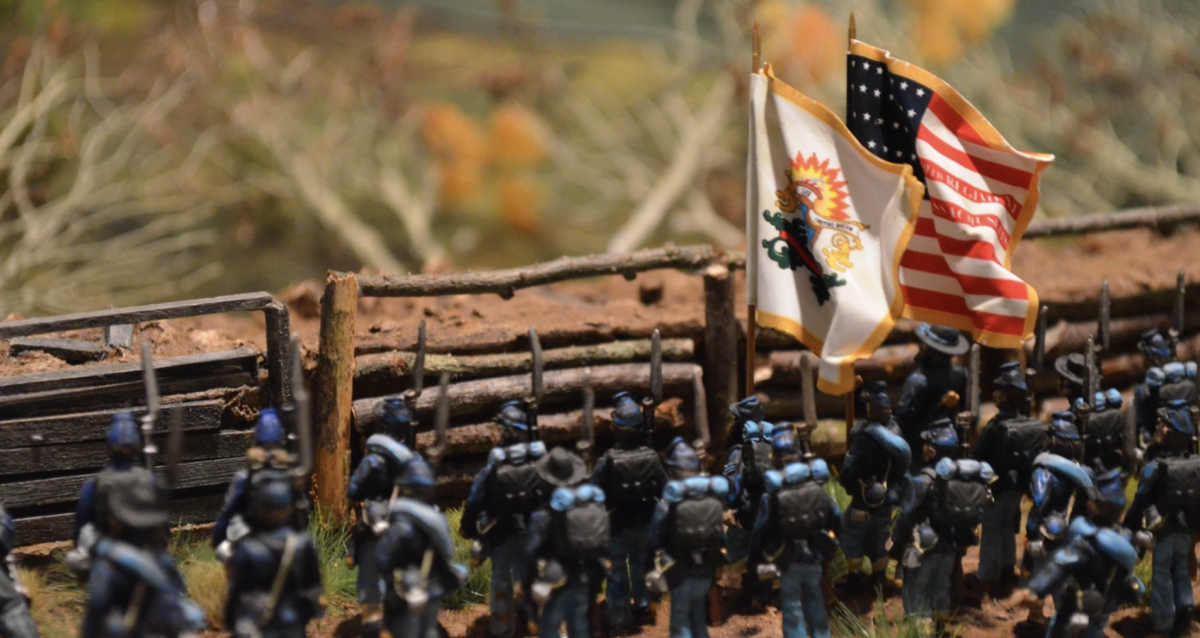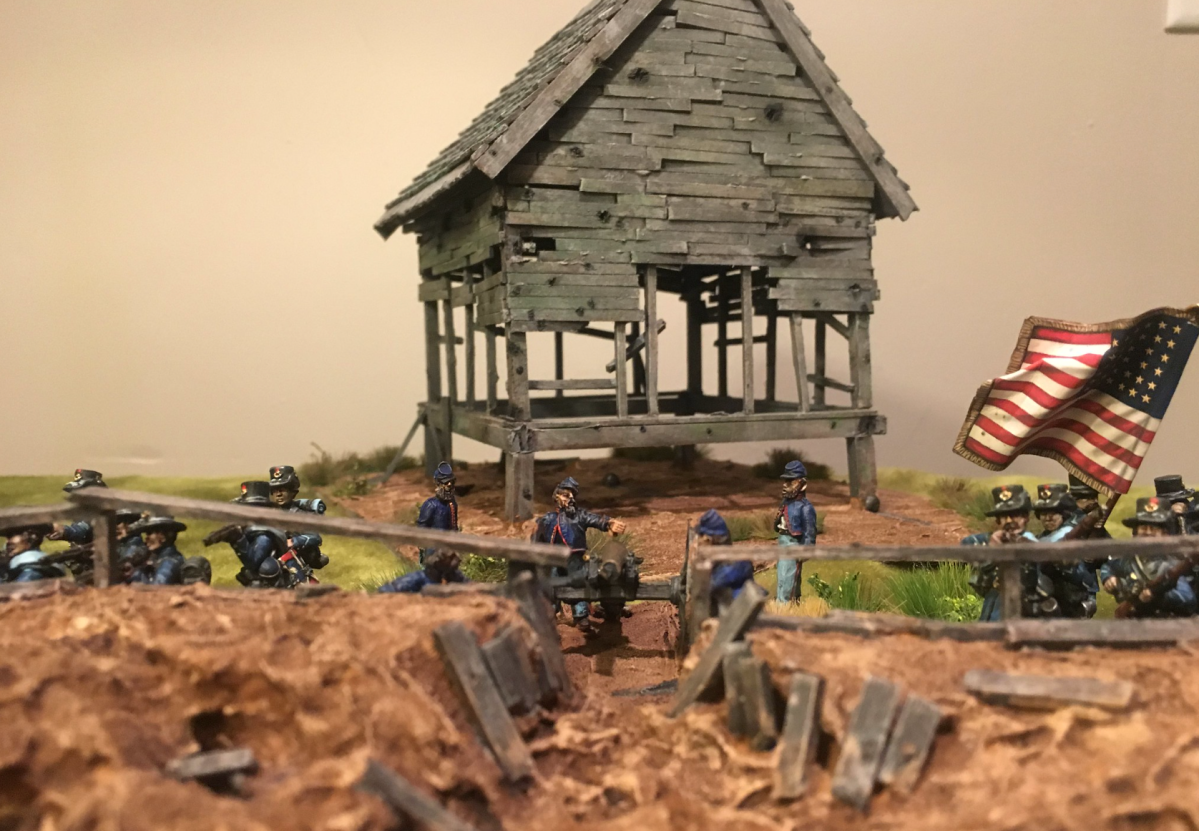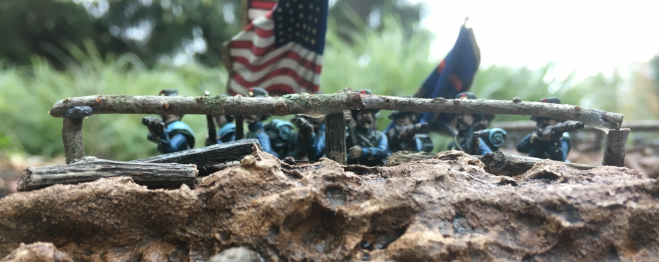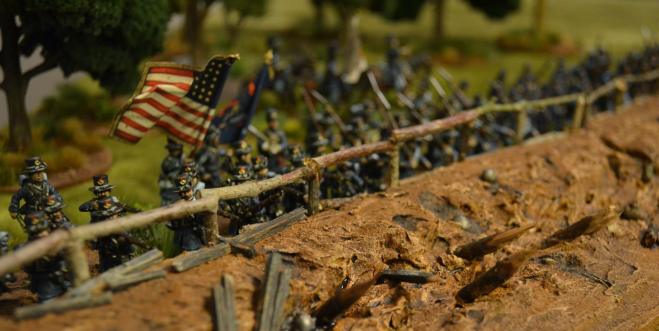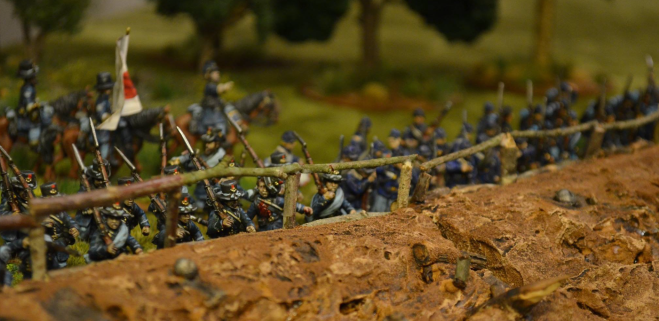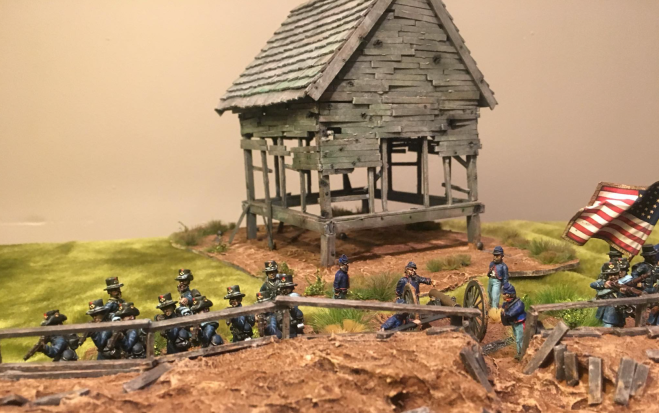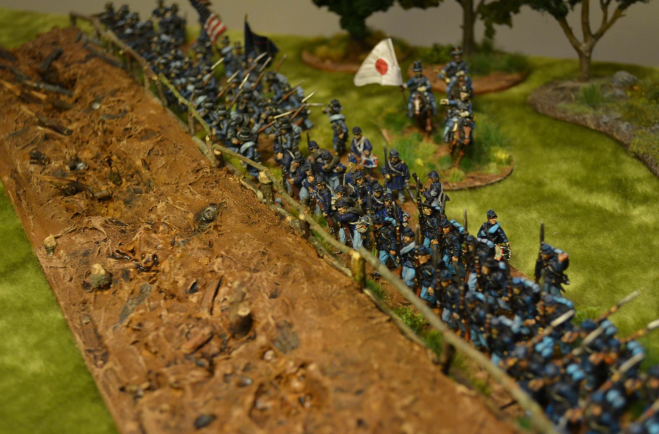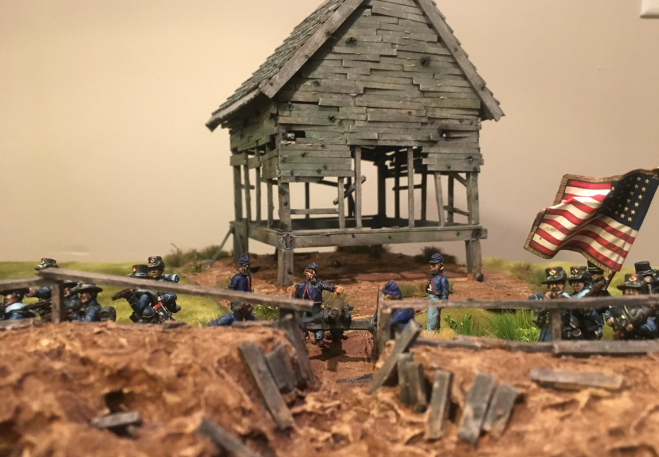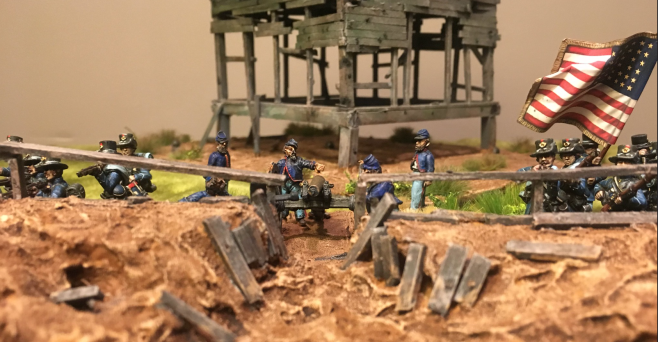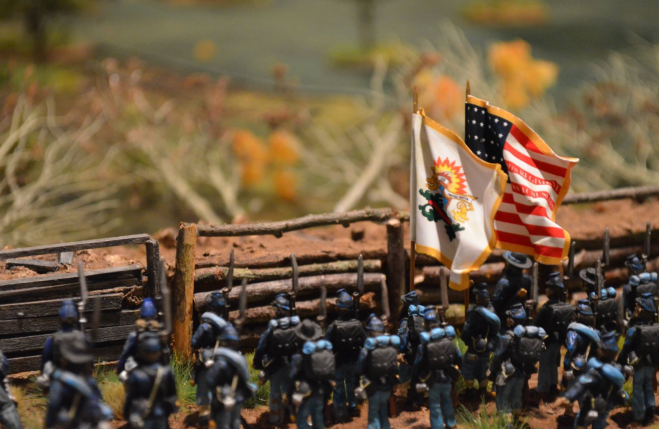Headquarters
9th Penn Cavalry
Franklin, Tenn
March 6th, 1863
Sir,
As the senior officer remaining of the Expedition to Spring Hill, as directed by Special Order No 15, from Head Quarters of Brig. Get Gilbert, commanding at Franklin, Tennessee. I beg leave to report that the expedition consisting of Col Colburns’s Brigade and Six hundred cavalry detachments from he 9th Penn & 4th Kentucky & 2nd Michigan under my command and the 18th Ohio Battery, Captain Heshire (Aleshire?) all under command of Col Colburn of the 33rd Indiana Infantry, left Franklin about nine o’clock on the morning of the 4th of March 1863, their line of march being on the direct road towards Spring Hill and Columbia. The regiments marched with but four wagons each, and a train of 80 wagons brought up the rear, for foraging purposes. The Expedition was ordered to march in a body to Spring Hill, thirteen miles distant, at which point a part of the cavalry was to be detached to march upon Rahley Springs on the Lewisburgh road, to meet certain U.S> forces from he direction of Murfreesboro.
About four miles from Franklin and about half past four o’clock A.M. the advance guard of our forces came into contact with the advance forces of the enemy, marching it is said so at back of our position at Franklin. Lines of battle were at once formed. The enemy occupying a range of hills coping the turnpike at right angles, while we took post on a knoll to the left of the road, our right extending over the undulating [next page] towards the railroad and our left. Some wooded hills and ravines in the direction of the Lewisburgh Road, our battery was at once brought forward and placed on a hill to the left while that of the Enemy was placed on a corresponding position upon their right, with one piece on a large hill to the left of their position. The first shell was fired from our guns at ten o’clock and forty minutes A.M. and in a moment afterwards a corresponding messenger came from the enemy.
The lines of the Enemy’s cavalry were drawn up in full view, on the face of the hills, within half a mile range, and to the right and left of their batteries. A few rounds from our guns caused the enemy to withdraw behind the hills to their rear but I noticed large bodies f the cavalry filing to the right and left from the turnpike, in the rear of their batteries, and taking position under the cover of the hills. The batteries confirmed for abut an hour an a half to thunder their compliments to each other when I discovered a position to our right from which a ravine in which they had massed large bodies of their forces could be shelled. I at once ordered up one piece to the position and a few shells cleared the enemy of their support to their battery on our left and it was at once withdrawn.
The enemy then retreated leaving some fifteen killed and carrying away a large number of wounded. During the battle our skirmishers were hotly engaged on the left in the hills and ravines, and at every point drove the enemy from their position. Our Our loss in this action was but two men wounded, and both slightly. I have no doubt but that the force of the enemy was a from three to four thousand cavalry with four pieces of artillery, one of which lost a wheel in the action, which was knocked to pieces by one of our shells. I also saw five or six (though I was informed there were more) horses that were killed by our shells. Just as the action ceased Col Colburn was informed that a large body of the enemies cavalry was approaching Franklin by the Lewisburgh road, and I immediately directed my cavalry upon their flanks upon which they retired. We encamped for the night upon the position held by the Enemy in the morning.
On the morning of the 5th soon after daylight our column was again in motion in direction of Spring Hill. By order of Col Corburn I directed the 4th Kentucky Cavalry under my command to observe the Carter’s Creek turnpike on our right, and the Lewisburgh Road on our left to see that no flanking force should gain our rear and with the 9th Penn and 2nd Michigan Cavalry deployed as flankers and skirmishers, moved cautiously on Spring Hill. About one mile from camp our skirmishers drove in the pickets of the enemy who after a few rounds retired but so slowly as to keep up a confirmed skirmish until the battle opened. At the range of the hills overlooking Thompson’s Station, about nine miles from Franklin the skirmishers of the Enemy made a very determined resistance but we charged them and they retired over the intervening valley and to the opposite hills. While this was going on I halted the head of the column, but Col Colburn rode up and ordered it to advance, remarking that the enemy were in small force and that we had nothing to fear. At this point the road turns sharply to the left and south (the previous direction for about 3 miles had been south of west) and for about three quarters of a mile is perfectly straight leading to the hills, that bound Thompson’s Station on the South.
The column had proceeded on this straight road for about five or six hundred yards and was just entering the jaws of the pass between the hills that we afterwards occupied as our position, when we were opened up by a Battery of the Enemy placed close on the right side of the road, at about half a mile range.
This was an eighteen pounder and the shell passing close over head of the column, struck in the ditch on the left of the road abut one hundred and fifty yards in the rear and within a few feet of the side of the column, exploding and polishing up the dirt, and stones, but some wonderful interposition of Providence without killing or wounding anyone. A six pounder also opened up at the same moment but the shell fell a few yards to the left in the field doing no damage.
The troops were at once deployed to the right and left under the hills to protect them from the shells that were now literally rained upon them and our artillery brought and placed in position three guns upon the hills to the left and two upon the hill to the right of the road, and in a few moments a battery of the Enemy of four guns which had heretofore been masked, opened upon our left flank, completely covering the ground upon which our infantry and cavalry were placed making it necessary to change their position, and also complete flanking our guns, and a battery to our right had previously opened upon our skirmishers in the valley near Thompson’s Station. This battery Col Colburn determined to charge and take hoping to throw back the left wing of the enemy upon their centre and force their position. This was the culminating point in the battle. The column was formed and [next page] moved from its position behind the guns over the crest of the hill and downing the valley below prepared to charge the battery while the Enemies guns thundered their shell upon them from front and flank.
They bravely withstood the shock and moved steadily forward, though their track through the fields could be plainly marked by the human milestones left in their rear. All at once there artillery of the Enemy ceased playing and a dense mass of infantry began to show themselves on the hills in our front. Col Colburn at once saw that all would be lost unless the column could be again retired behind our guns, and sent an officer to order them to fall back.
But it was then too late. The avalanche had been started and it came sweeping down upon them, while from behind a stone fence in their front, near the railroad, a perfect storm of lead was thrown upon them.
Seeing that all was lost, I was ordered by Col Colburn to call in my cavalry and form them in such position as to cover his retreat. I at once proceeded to execute the movement necessary to prepare for retreat and formed my cavalry behind a small strip of woods about a fourth of a mile to the rear of the Battery and directly skirting the Franklin road at the point where the road turns to the East, and seeing the infantry of the enemy moving from the hill occupied by their flanking Battery with the intention of cutting off our retreat and capturing the Battery and wagon train. I at once ordered Majors Scranton of the 2nd Michigan and Jones of the 9th Penn Cavalry to dismount such part of my command as might be necessary and take possession of the fences and megnalities [sp?] of the ground and if possible drive them off till I could withdraw the Battery and be joined by Col Colburn’s infantry. [new page]
I at once ordered the Battery to withdraw from the hill to the left of our position as a swarm of Rebel infantry was about enclosing it, and then dashed off to the hill on the right and withdrew the two pieces stationed there, and just in time as the Rebel line was within sixty yards of them and they entirely unprotected, the infantry under Col Colburn having retreated through the hills to the right of our position and in a directly opposite direction from the point I was holding to cover the retreat. After getting the guns under my protection I waited (though my while line was engaged with the enemy) at least fifteen minutes hoping that the firing on my right was receding while that on my left was approaching and that nothing but stubborn resistance could save my flank. I ordered the retreat to begin. For two miles my men sustained with unflinching bravery the repeated assaults of more than three times their number, while others could be seen at double quick still further towards my rear.As I withdrew from one position I had at once to place them in new ones to repel fresh attacks. To Major Scranton in my extreme front and flank and Major Jones in my extreme rear, and so the heroic bravery of the 2nd Michigan and 9th Penn is due the safety of my retreat. After about two miles and a half the enemies infantry withdrew finding that they were foiled in cutting off my retreat. Their cavalry often came in sight, but never participated for a moment in the engagement. About 3 o’clock [P.M.] the firing ceased, and my retreat was no further interrupted. Had Col Colburn retreated by the Franklin road, not a man would have been lost. My column never moved a step until long after he was out of sight [next page]
. . . on the hills to my right. After passing the West Harpeth Creek, I for the first time heard that there was a regiment if infantry retreating from the field of battle, without firing a gun, and that they were in front of the wagon train. Major Scranton was the first to make the discovery and galloped forward to stop them till the artillery could be brought up. By whose order they marched away in retreat, I have no knowledge.
I known Col Colburn never issued such an order to them and I did not know they were in existence to give them such an order. Had they remained upon the ground, or sent to me for orders, I could not only have safely covered the retreat, but have given the enemy such a chastisement as would have made them more cautious in the future. The Enemy reports our killed at sixty five and wounded at two hundred and fifty while they on their part acknowledge a loss of one hundred and sixty killed with a very large proportion of wounded.
I cannot speak too highly of the steadiness, discipline and bravery of the troops under my command. Officers and men did their duty nobly. The 18th Ohio Battery of long range Rodman guns acquitted themselves most nobly and thigh subjected to a cross fire from the artillery of the Enemy, they never for a moment became excited, but stood to their guns delivering their fire with regularity and precision. The Battery when withdrawn, had but sixty shells on hand for the while five guns. Col Colburn behaved with the greatest bravery, and was under fire during the whole of battle.
Chaplain Edmund McKinney of the 9th Penn Cavalry rendered most essential service during the retreat. He remained with the rear guard and [next page] by his coolness and bravery during a most critical moment, when hundreds of the Enemy were thrown upon a handful, contributed largely to the safety of my command.
Cant Charles A. Apple, Co F. 9th PA Cavalry with his own and parts of Cos A, Co G, Co H and Co L with a few of the 2nd Michigan Cavalry constituted the rear guard. Capts Kimmel, Longsdorf and Waters and Lieut Hancock and Hiesland of the 9th PA Cavalry behaved with marked coolness and bravery.
The loss on the part of the 9th PA Cavalry was one killed, one mortally wounded, who died during the night, five wounded and six taken prisoners.
On the part of the 2nd Michigan Cavalry two men were killed and eleven wounded. Of the 18th Ohio Battery one man is missing.
Respectfully submitted (Signed) Thomas J. Jordan
Col Commanding, 9th Penn Cavalry
eBay acution, September 2019
